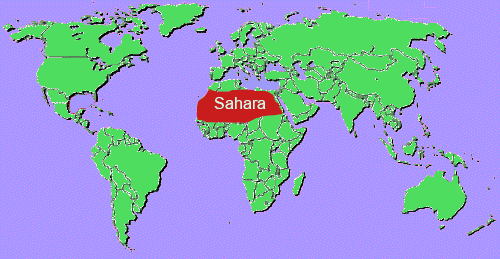
Circle the area on this map

B. Africa’s great Sahara Desert is the world’s largest hot desert and third largest desert overall after Antarctica and the Arctic. The Atacama Desert in South America is the driest non-polar desert in the world, receiving less precipitation than all other deserts. Some weather stations in the Atacama have never recorded precipitation.
C. The states of Texas, Louisiana, Mississippi, Alabama, and Florida border the Gulf on the north. The dust clouded the air in those states over the weekend, but the plume was moving inland and could reach as far as southern Illinois and Ohio. Saharan dust plumes are annual events but this could be the largest in 50 years.
A. The dry layer of air which brings the dust across the Atlantic Ocean suppress the development of tropical storm systems that turn into hurricanes, according to the National Weather Service. But, it is a short-term effect. The hurricane season runs from June 1 through Nov. 30.
B. A cyclone in the Atlantic is considered a tropical storm when it has one-minute maximum sustained winds of at least 39 mph. It becomes a Category 1 hurricane when wind speeds hit 74 mph. Category 2 hurricanes start at 96 mph; Category 3 at 111 mph: Category 4 at 131mph; and devastating Category 5 storms have winds of more than 155 mph.